- February 19, 2024
- By Karen Shih ’09
The election year has barely started, candidates are dropping faster than Beyonce’s new singles and you’re already tired of hearing about it all. Instead, this Presidents Day, let’s flip the politician’s script and not on the future, but the past—specifically at how the University of Maryland has played host to the nation’s chief executive throughout the decades.
Located just 12 miles from the White House, UMD is perfectly placed for presidents to come impart wise words at commencement or to catch the Terps driving to the basket at the Xfinity Center.
(The university is even home to the archives of disgraced former Maryland Gov. and Vice President Spiro T. Agnew, which includes a monkey skin cape gifted to him by the president of Kenya in 1971 and a painting of him as a circus clown, orange hair and all.)
Not all came while they were in office; some came early in their political careers, while others spoke as elder statesmen. All drew big crowds—and some even got some Terrapin goodies to take home.
Here’s what happened when six presidents stopped by College Park:
John F. Kennedy
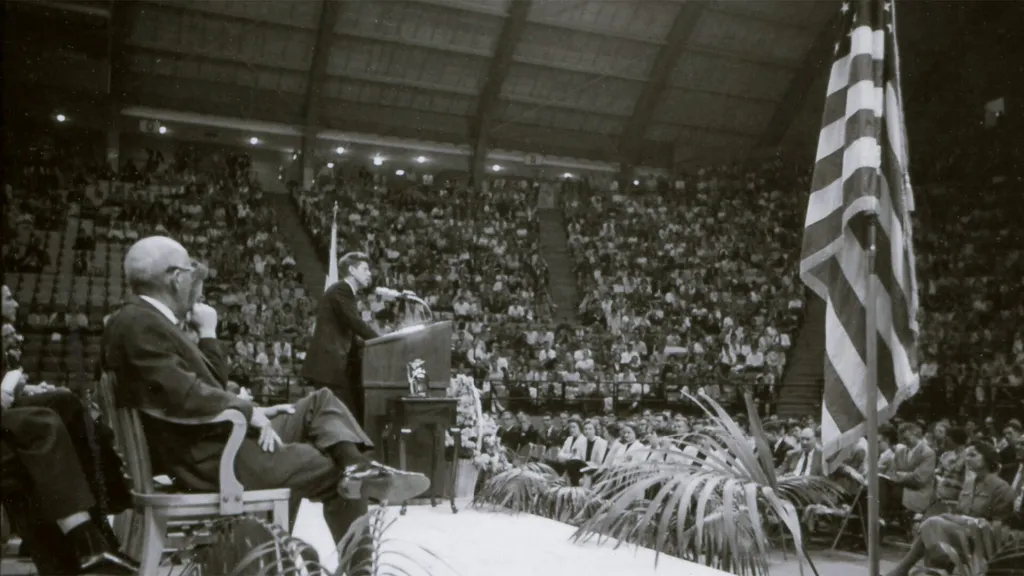
The then-U.S. senator from Massachusetts delivered a decidedly political commencement speech in 1959 to 5,500 at Cole Field House. He called for the repeal of a loyalty oath in the National Defense Education Act, encouraged students to enter politics, and said “he is not to be considered a candidate for the presidency,” reported The Diamondback, seven months before Kennedy declared his intention to run. A year later, on the campaign trail and hoping to win the Maryland primary, he visited Ritchie Coliseum, where he was presented with a stuffed terrapin.
Dwight D. Eisenhower
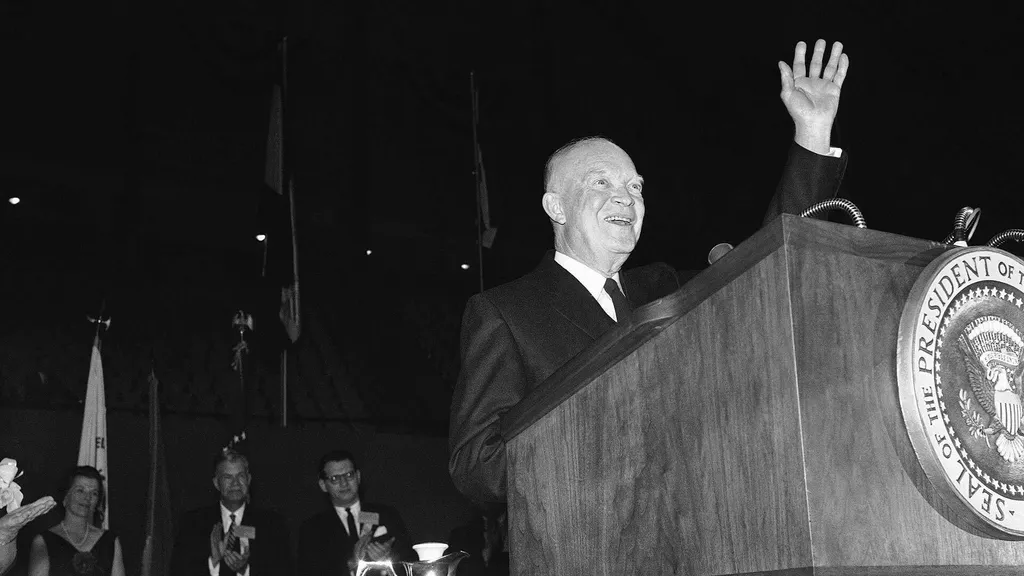
President Eisenhower delivered an address opening the White House Conference on Children and Youth, also at Cole, in 1960. Described as “still tanned from his Latin American trip” by The Diamondback, he discussed juvenile delinquency in front of a crowd of educators, students and administrators. “You are working with the most precious resource of our nation: a whole generation of Americans who will someday make their country’s policies and dispose its power,” he said.
Lyndon B. Johnson
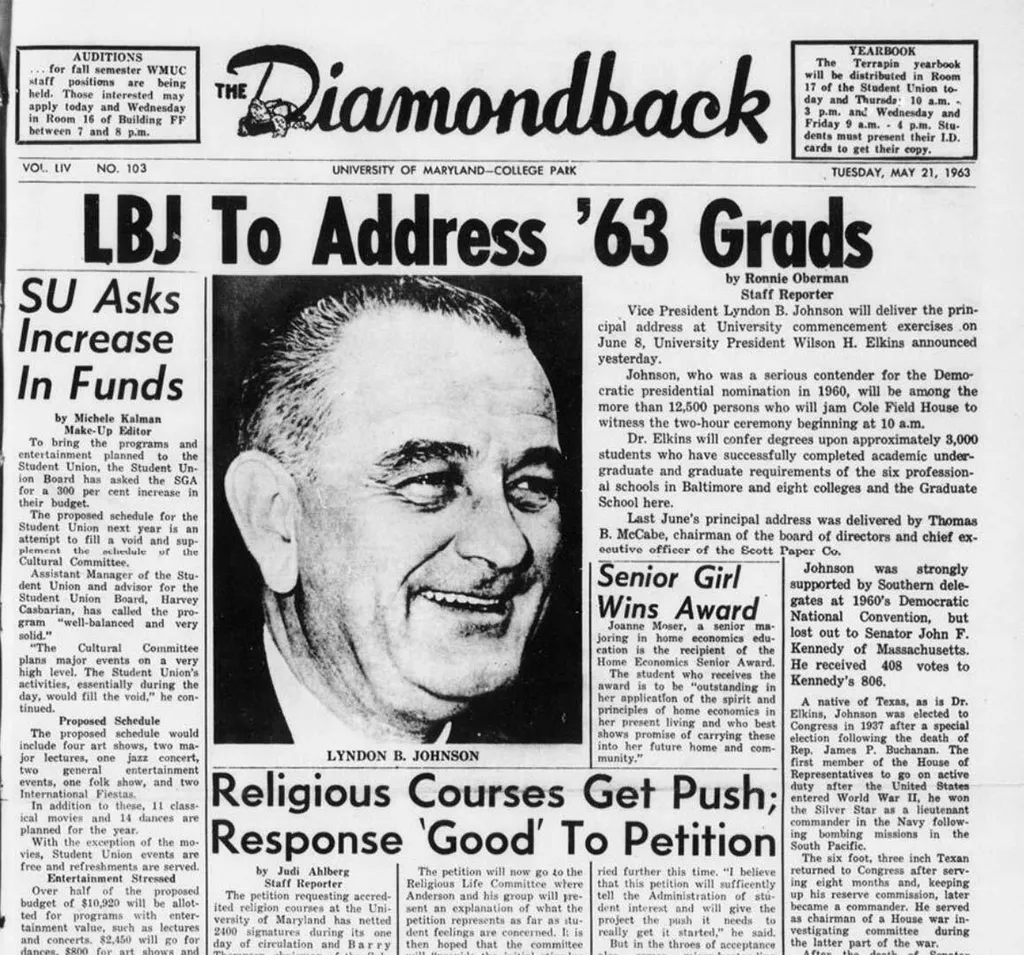
Johnson first came as vice president, delivering the commencement address to more than 12,500 people in June 1963. Six years later, he came for a surprise visit to address the Conference of State Committees on Criminal Administration meeting in the Center for Adult Education.
Jimmy Carter
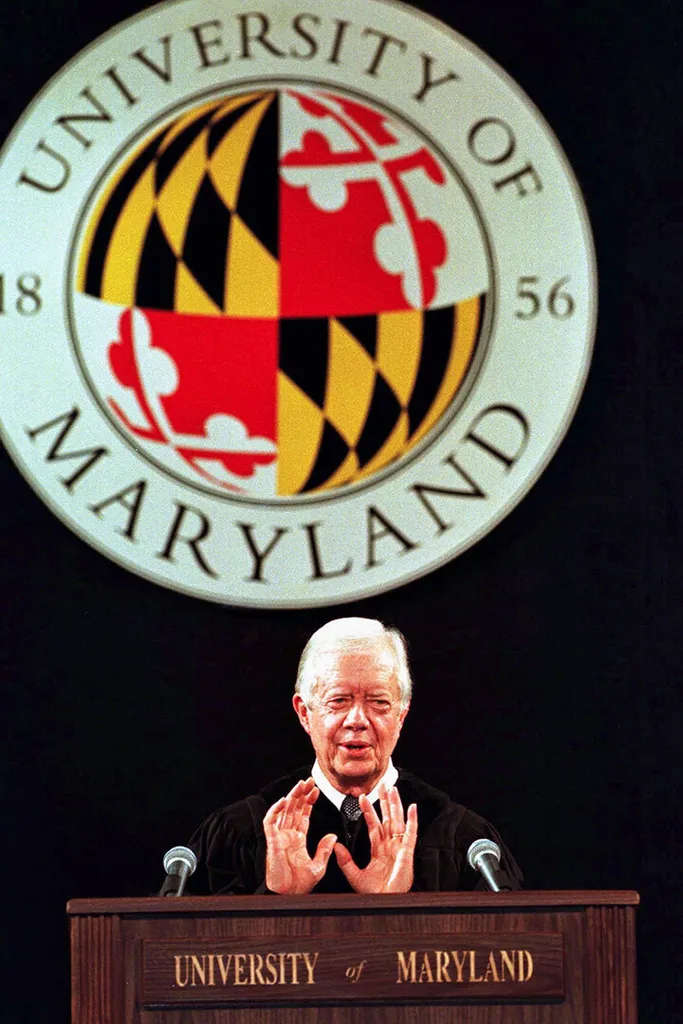
Twenty years after the Camp David Accords, a peace treaty between Israel and Egypt that Carter helped broker, Carter gave the Sadat Lecture for Peace in October 1998 at Stamp Student Union.
“Anyone dealing with the Middle East has to be an optimist,” he said. “The obstacles are the politicians. They do not have the courage to honor the demands and the prayers of the mothers.”
Bill Clinton
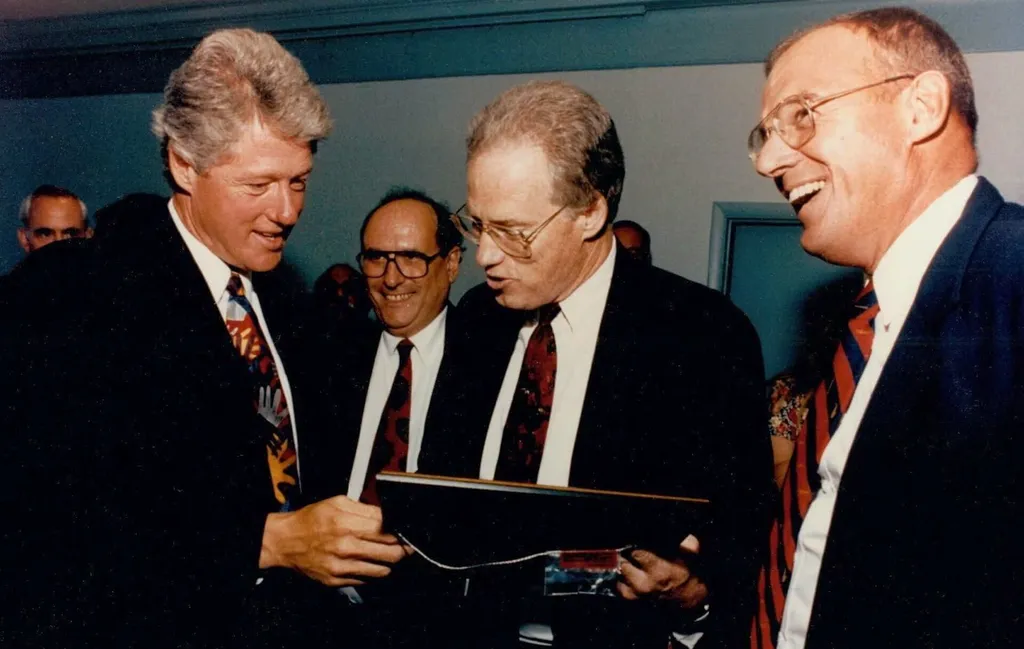
Clinton first stepped onto campus as a young delegate to the American Legion-sponsored Boys Nation in 1963—a trip that inspired him to pursue a career in politics after he met President Kennedy at the White House.
Three decades later, he returned to College Park to celebrate the Summer of Service program at the Stamp Student Union, and in 1999, he advocated for the expansion of the AmeriCorps national service program at Ritchie Coliseum.
Barack Obama
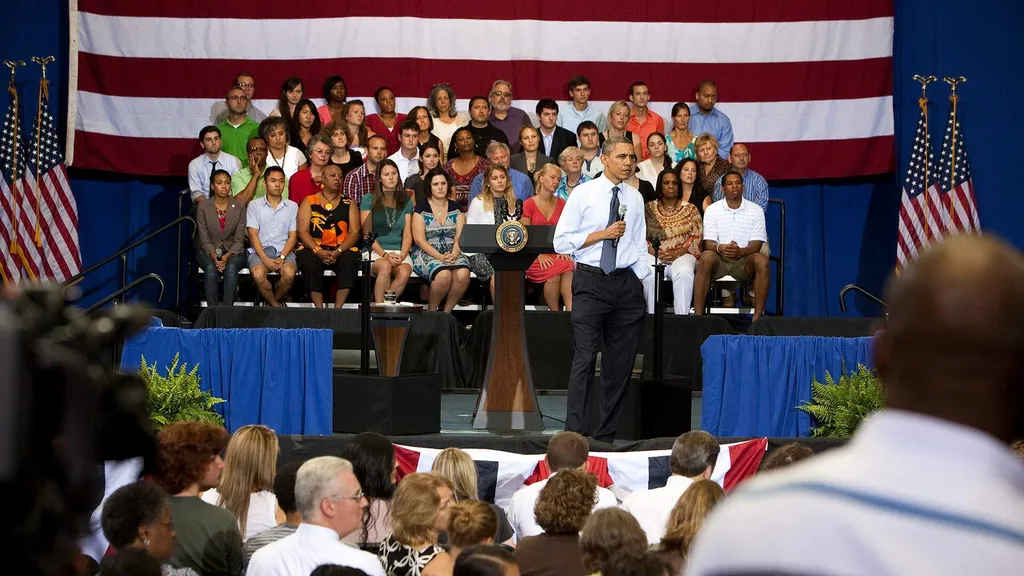
The 44th president holds the record for the most visits to UMD—and perhaps the most unusual. While he showed up for typical campaign rallies in 2006 (for U.S. Sen. Ben Cardin) and 2008 (for himself), as well as to tout his Obamacare health care reform plan in 2009 and to speak at a town hall in 2011, he also brought the whole family to a Terps men's basketball game in 2013.
But he wasn’t cheering for Maryland—he came to support his brother-in-law, Craig Robinson, then-coach of the Oregon State basketball team, which was in College Park for a non-conference game. The presidential boost worked: The Beavers beat the Terps 90-83.
Terps don’t just applaud for presidents—some of them have sought the highest office for themselves, including:
- Republican Carly Fiorina MBA ’80, former chief executive of Hewlett Packard, in 2016
- Democrat Eric Swalwell ’03, congressman from California, in 2019
- Independent Jerome Segal, former Institute for Philosophy and Public Policy researcher, in 2019 (as a member of his own Bread and Roses party)
Topics
Campus & CommunityTags
Student Experience